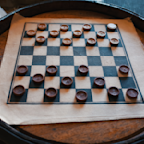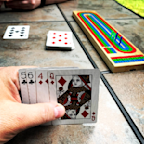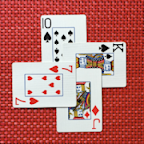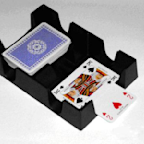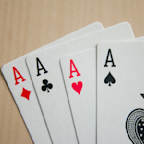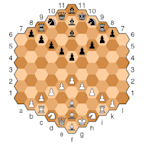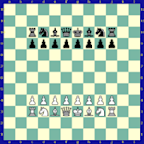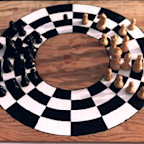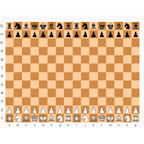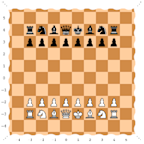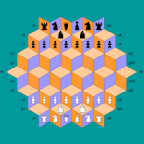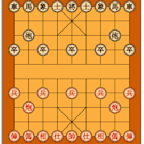Search results
The en passant rule is a special pawn capturing move in chess. "En passant" is a French expression that translates to "in passing", which is precisely how this capture works. Pawns can usually capture only pieces that are directly and diagonally in front of them on an adjacent file.
In chess, en passant (French: [ɑ̃ pasɑ̃], lit. "in passing") describes the capture by a pawn of an enemy pawn on the same rank and an adjacent file that has just made an initial two-square advance. This is an exception or special case in the rules of chess. The capturing pawn moves to the square that the enemy pawn passed over, as if the ...
Feb 4, 2023 · Last Updated: February 4, 2023. En passant is one of two special moves in chess (the other being castling ). In en passant, a pawn can capture a pawn to its sides. En passant can be tricky for beginner players to grasp. Nevertheless, en passant is fathomable to even beginner players, yourself included.
En passant is a rare chess move that refers to a unique way of capturing a pawn. Once a pawn advances two squares forward, the enemy pawn in the adjacent square can capture that pawn. It is a one-time “take it or leave it” opportunity, and if not taken in that turn, it will not be valid in the next turn.
En passant is French for “in passing “. In chess, it describes a special move in which a pawn can capture another pawn (not piece!) that just moved alongside it. En passant can be a bit complicated to grasp for beginners, so let’s break it down.
3 days ago · En Passant Guide. In chess, en passant is a special pawn capture that takes place when a pawn moves to a square directly beside an enemy pawn that has just advanced two squares, capturing it as if it had moved only one square (see visual explanation below). We understand if this is confusing to you. Let us explain!
Feb 18, 2022 · Quick Summary: En passant is a special pawn capture in chess. You can capture en passant when your pawn is one square deep into your opponent’s half of the board, and they move their pawn two squares from its starting square such that it lands directly next to yours.

